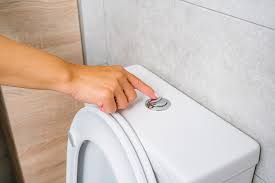A whistling toilet flush can be an unexpected and annoying issue in your home. The high-pitched sound that accompanies the flush not only disrupts the peace but also indicates an underlying problem with your plumbing system. In this article, we’ll explore the common causes of a whistling toilet flush and the steps you can take to resolve this musical inconvenience.
Understanding the Whistle:
The whistling sound during a toilet flush is typically caused by air rushing through a narrow passage. This can happen when water flows too quickly through a restricted area, creating a vibration that produces a high-pitched noise. Identifying the root cause is crucial to finding an effective solution.
Check for Clogs in the Flush Valve:
A common culprit for a whistling toilet is a clogged flush valve. Sediment, mineral deposits, or debris can accumulate in the valve, obstructing the smooth flow of water. Inspect the flush valve and clean it thoroughly to remove any build-up that may be causing the whistle.
Examine the Fill Valve Assembly:
The fill valve is responsible for regulating the water level in the toilet tank. If the fill valve assembly is improperly adjusted or if there’s a malfunction, it can lead to excessive water pressure and cause a whistling noise. Ensure that the fill valve is working correctly and adjust it according to the manufacturer’s guidelines.
Inspect the Flapper:
The flapper is a rubber component that seals the flush valve. If the flapper is worn or not sealing properly, it can create turbulence in the water flow, resulting in a whistling sound. Inspect the flapper for any signs of damage or deterioration and replace it if necessary.
Adjust Water Pressure:
High water pressure can contribute to the whistling phenomenon. To address this, check the water pressure in your home and, if it exceeds the recommended levels, consider installing a pressure-reducing valve. This device will help regulate water pressure and prevent the whistling sound during toilet flushes.
Look for Ventilation Issues:
Adequate ventilation is crucial for a well-functioning plumbing system. If your plumbing vents blocked or insufficient, it can lead to air pressure imbalances, causing the whistling noise during toilet flushes. Clear any obstructions in the vent pipes to restore proper airflow.
Inspect the Toilet Fill Valve:
The toilet fill valve controls the water entering the toilet tank after a flush. A malfunctioning fill valve can cause water to rush into the tank too quickly, leading to a whistling sound. Check the fill valve for proper functioning and replace it if needed.
Consider Installing a Toilet Fill Valve Diverter:
Some toilet models experience whistling due to the design of the fill valve. Installing a toilet fill valve diverter can redirect the water flow, minimizing turbulence and reducing the likelihood of the whistling noise.
Consult a Professional Plumber:
If you’ve tried the above steps and the whistling issue persists, it’s advisable to consult a professional plumber. A trained plumber can conduct a comprehensive inspection of your plumbing system, identify the root cause, and implement the necessary repairs or adjustments.
Preventive Maintenance:
To avoid future instances of a whistling toilet flush, practice preventive maintenance. Regularly clean and inspect the various components of your toilet, address any plumbing issues promptly, and stay vigilant for signs of wear or damage.
Conclusion:
A whistling toilet flush may seem like a minor annoyance, but it signals an underlying problem that should not be ignored. By identifying the cause and taking proactive steps to address the issue, you can restore peace to your bathroom and ensure the proper functioning of your plumbing system. If in doubt, don’t hesitate to seek professional help to resolve the whistling toilet symphony.

